American Landscapes
Publisher: Oxbow Books
Series editors: Peter Topping, T. R. Kidder & Julie Gardiner
American Landscapes is a peer reviewed series providing an informed overview – from a holistic landscape perspective – of the history and changing land use of particular areas/regions or archaeological/historical themes in North America. Titles include single-authored or edited papers on a particular theme of landscape history or archaeology, a region, or related landscape settings across broader areas and timeframes. Wider themes include the influence of and human relationships with particular landscape features such as woodlands, vegetation zones, or river catchments. It also presents discussions of topics including rock art, migration, indigenous religious practices, or aspects of state and national parks.
Each volume provides a comprehensive and accessible narrative aimed at the informed reader, presenting an up-to-date review of the latest research from archaeology, anthropology, historical studies and the environmental sciences. Appendices of key sites or landscapes to visit and their accessibility are included where applicable.
(Print binding: Paperback | Format: 246 x 187 mm)American Landscapes is a peer reviewed series providing an informed overview – from a holistic landscape perspective – of the history and changing land use of particular areas/regions or archaeological/historical themes in North America. Titles include single-authored or edited papers on a particular theme of landscape history or archaeology, a region, or related landscape settings across broader areas and timeframes. Wider themes include the influence of and human relationships with particular landscape features such as woodlands, vegetation zones, or river catchments. It also presents discussions of topics including rock art, migration, indigenous religious practices, or aspects of state and national parks.
Each volume provides a comprehensive and accessible narrative aimed at the informed reader, presenting an up-to-date review of the latest research from archaeology, anthropology, historical studies and the environmental sciences. Appendices of key sites or landscapes to visit and their accessibility are included where applicable.
(Print binding: Paperback | Format: 246 x 187 mm)American Landscapes is a peer reviewed series providing an informed overview – from a holistic landscape perspective – of the history and changing land use of particular areas/regions or archaeological/historical themes in North America. Titles include single-authored or edited papers on a particular theme of landscape history or archaeology, a region, or related landscape settings across broader areas and timeframes. Wider themes include the influence of and human relationships with particular landscape features such as woodlands, vegetation zones, or river catchments. It also presents discussions of topics including rock art, migration, indigenous religious practices, or aspects of state and national parks.
Each volume provides a comprehensive and accessible narrative aimed at the informed reader, presenting an up-to-date review of the latest research from archaeology, anthropology, historical studies and the environmental sciences. Appendices of key sites or landscapes to visit and their accessibility are included where applicable.
(Print binding: Paperback | Format: 246 x 187 mm)American Landscapes is a peer reviewed series providing an informed overview – from a holistic landscape perspective – of the history and changing land use of particular areas/regions or archaeological/historical themes in North America. Titles include single-authored or edited papers on a particular theme of landscape history or archaeology, a region, or related landscape settings across broader areas and timeframes. Wider themes include the influence of and human relationships with particular landscape features such as woodlands, vegetation zones, or river catchments. It also presents discussions of topics including rock art, migration, indigenous religious practices, or aspects of state and national parks.
Each volume provides a comprehensive and accessible narrative aimed at the informed reader, presenting an up-to-date review of the latest research from archaeology, anthropology, historical studies and the environmental sciences. Appendices of key sites or landscapes to visit and their accessibility are included where applicable.
(Print binding: Paperback | Format: 246 x 187 mm)
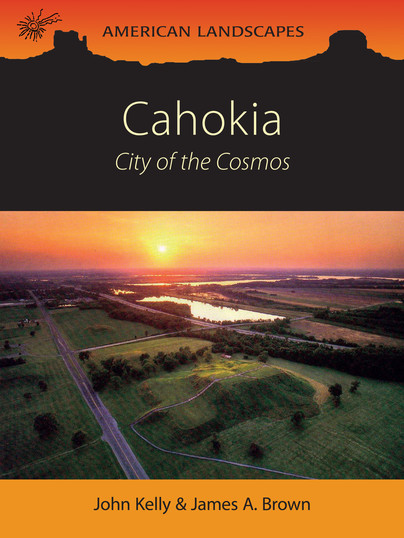
Format: Paperback
Pages: 256
ISBN: 9781785708855
Pub Date: 31 Dec 2024
Illustrations: b/w and colour
Description:
The large American Indian city of Cahokia sits amidst a diverse natural landscape within the larger central Mississippi river valley. Well positioned on the rich agricultural soils of the Mississippi river bottomlands of the Amercan Bottom it is at the core of a cultural landscape that its residents helped shape. In this volume the editors and authors attempt to not just focus on Cahokia and its configuration but also the other towns and settlements dispersed throughout the region extant for nearly four centuries.
The importance of Cahokia to native peoples and to the world community as a UNESCO World Heritage site resides in its creation as a ‘Cosmological Center of the Universe’. In order to begin comprehending where we are today in an interpretation that respects and pays homage to those that were instrumental in its conception and the implementation of a vision, one must understand the principles that underlie the Indigenous cosmology and rituals of Eastern North America. Mapping the mounds began as early as the late 18th century and thus represents the first efforts to depict what was readily seen. Over 300 sites with earthen mounds have been documented in the region and range from isolated mounds honoring the dead thousands of years ago to an array of over 100 mounds in the case of Cahokia that in some instances honored the ancestors individually and collectively. The editor’s investigations over nearly 25 years have helped elucidate the significance of Cahokia as an urban center and the processes leading to its creation. The history of this sacred place is highlighted by a number of major discontinuities that represent intellectual ‘axis mundi’ of this discussion. However, it is the broader landscape perspectives over the centuries that serve to illuminate the vibrant colors of this narrative.
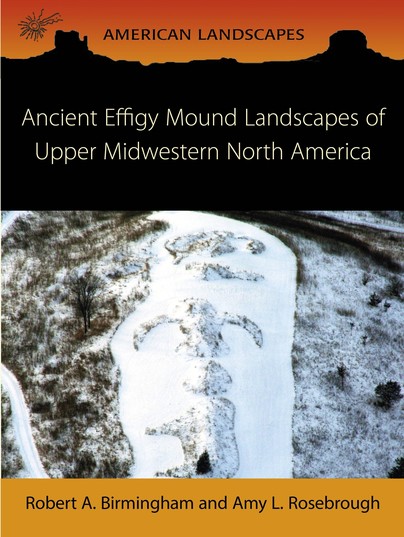
Format: Paperback
Pages: 240
ISBN: 9781785700873
Pub Date: 15 Nov 2024
Illustrations: black/white and colour illustrations
Description:
Between c. AD 700 and 1100, Late Woodland people of the Upper Midwest used the topography and other features of the natural landscape to create vast ceremonial landscapes consisting of thousands of earthen mounds sculpted into animals and animal spirits that mirrored their belief and clan-based social structure and that served an important role in mortuary ritual. In so doing, the Late Woodland people created quite visible three-dimensional maps of ancient cosmology and social structures that are similar to the beliefs and social systems of more recent Indian people.
Ancient Effigy Mound Landscapes will provide an overview of the effigy mound phenomenon of the Upper Midwest centered on southern Wisconsin. It documents the nature of these unique landscapes, describing the use of topography and natural features to create the ceremonial landscapes, and provides the interpretation that these were living landscapes in which ancestral animals and supernatural beings were ritually brought back to life at places where the spirits are best evoked in a continuous cycle of death and rebirth of the earth and its people. These monuments can often only be fully appreciated by modern observers from the air and Robert Birmingham includes both high quality historical and modern maps, aerial photographs and the results of the very latest LIDAR imagery to reveal detail of the stunning complexity and ordered layouts of these mysterious spiritual landscapes.
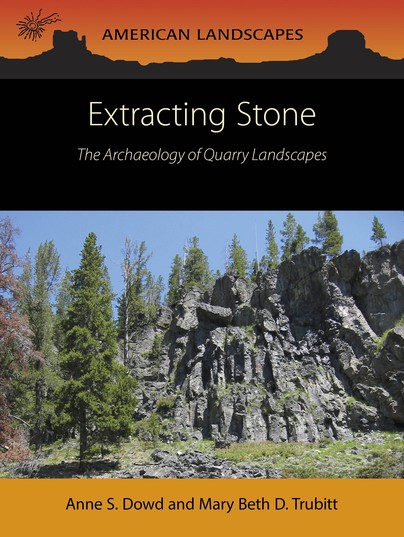
Format: Paperback
Pages: 168
ISBN: 9781785706240
Pub Date: 05 Mar 2024
Illustrations: b/w and colour
Description:
Extracting Stone considers where chert or obsidian were mined and how North American stone quarry landscapes have been identified and studied from the time of pioneer William Henry Holmes (1846–1933) onward. Three especially significant extraction areas are examined in detail: Flint Mine Hill, New York, along the Hudson River; “Spanish Diggings”, Arkansas, in the Ouachita Mountains; and Obsidian Cliff, Wyoming, in the headwaters of the Yellowstone River. The authors compare and contrast extraction scales with artifact distribution or use areas established through precise material characterization techniques to discuss trade and exchange, the emergence of inequalities, resource restriction orcontrol, and the technological systems of which these land- or quarry-scapes formed a part.
The chronological periods covered by quarrying activities show that most intensive use took place in the Archaic and Woodland periods, roughly 4000–1000 years ago when denser populations existed, but use began as early as the Paleoindian Period, about 13,000–9000 years ago and, in some cases, continues into the modern day. Recent research into early human population of the continent at sites such as White Sands in Nevada, where human footprints are found in association with those of extinct fauna, may push back these dates another 10,000 years, to 23,000 years ago.Archaeologists are now employing a landscape approach to quarry systems, using new technologies such as Geographic Information System (GIS) computer mapping and Light and RADAR (LiDAR) aerial imaging. The authors demonstrate how sites functioned in a broad synchronic landscape context, which site locations or raw material types were preferred and why, what cultures were responsible for innovative or intensive quarry resource extraction, and how this land use changed over time.An Appendix lists quarry sites that the general public can view.
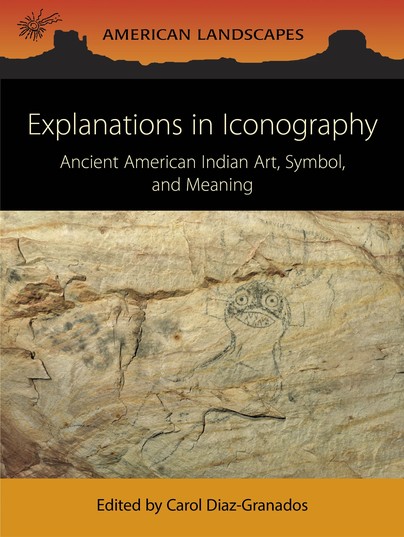
Format: Paperback
Pages: 240
ISBN: 9798888570425
Pub Date: 05 Aug 2023
Illustrations: 90 illustrations in B/W
Description:
Explanations in Iconography: Ancient American Indian Art, Symbol, and Meaning is a significant contribution to archaeology and to- iconography studies – a discipline that has gradually been coming into its own. Iconography is a rich and fascinating field when applied to the complex and enigmatic imagery on many ancient Pre-Columbian artifacts. When viewed through the lens of early ethnographic records and American Indian oral traditions – as well as information from knowledgeable American Indian elders – it opens a world of understanding and clarity until recently unknown in the field of anthropological archaeology.
It brings us closer to the people who created the artifacts and offers a glimpse into the symbols and beliefs that were important to them.Chapters cover a wide variety of artifacts and imagery from several ancient American Indian cultures, drawn from a variety of regions, mainly in the Midwest and Eastern United States. These artifacts include petroglyphs and pictographs (rock art), mounds, engraved shell cups and gorgets, burial architecture and grave furniture, pottery, copper repoussé, and other media. Ancient graphics, engravings, mounds, and all were created to deliver a message to the viewer – many of which are finally coming to light. This volume encourages the reader to look more deeply into the meaning behind ancient imagery and arts, and give the past a chance to be known.
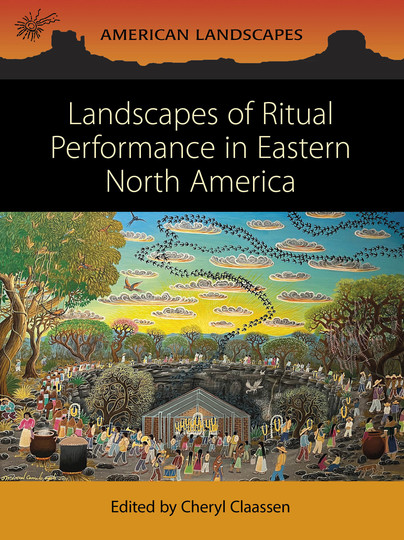
Format: Paperback
Pages: 256
ISBN: 9781789259292
Pub Date: 15 Jan 2023
Illustrations: 55 B/W images
Description:
In the long history of documenting the material culture of the archaeological record, meaning and actions of makers and users of these items is often overlooked. The authors in this book focus on rituals exploring the natural and made landscape stages, the ritual directors, including their progression from shaman to priesthood, and meaning of the rites. They also provide comments on the end or failure of rites and cults from Paleoindian into post-DeSoto years.
Chapters examine the archaeological records of Cahokia, the lower Ohio Valley, Aztalan Wisconsin, Vermont, Florida, and Georgia, and others scan the Eastern US, investigating tobacco/datura, colour symbolism, deer symbolism, mound stratigraphy, flintknapping, stone caching, cults and their organisation, and red ochre. These authors collectively query the beliefs that can be gleaned from mortuary practices and their variation, from mound construction, from imagery, from the choice of landscape setting. While some rituals were short-lived, others can be shown to span millennia as the ritual specialists modified their interpretations and introduced innovations.
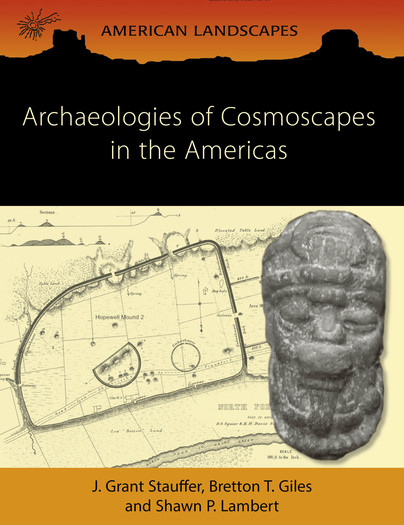
Format: Paperback
Pages: 288
ISBN: 9781789258448
Pub Date: 15 Jul 2022
Illustrations: B/w and colour
Description:
This volume examines how pre-Columbian societies in the Americas envisioned their cosmos and iteratively modelled it through the creation of particular objects and places. It emphasises that American societies did this to materialize overarching models and templates for the shape and scope of the cosmos, the working definition of cosmoscape. Noting a tendency to gloss over the ways in which ancestral Americans envisioned the cosmos as intertwined and animated, the authors examine how cosmoscapes are manifested archaeologically, in the forms of objects and physically altered landscapes.
This volume includes case studies of cosmoscapes that present themselves as forms of architecture, portable artifacts, and transformed aspects of the natural world. In doing so, it emphasises that the creation of cosmoscapes offered a means of reconciling peoples experiences of the world with their understandings of them.
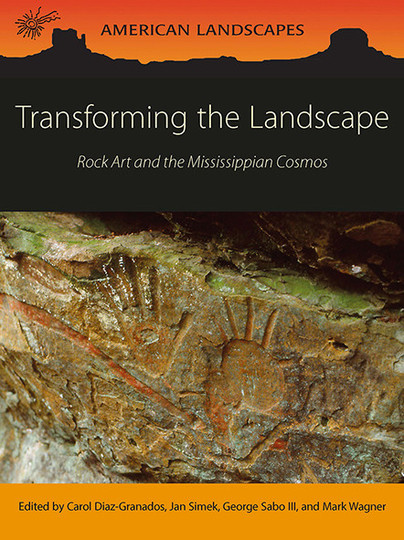
Format: Paperback
Pages: 288
ISBN: 9781785706288
Pub Date: 18 Apr 2018
Illustrations: b/w and colour
Description:
This beautifully illustrated volume examines American Indian rock art across an expansive region of eastern North America during the Mississippian Period (post AD 900). Unlike portable cultural material, rock art provides in situ evidence of ritual activity that links ideology and place. The focus is on the widespread use of cosmograms depicted in Mississippian rock art imagery.
This approach anchors broad distributional patterns of motifs and themes within a powerful framework for cultural interpretation, yielding new insights on ancient concepts of landscape, ceremonialism, and religion. It also provides a unified, comprehensive perspective on Mississippian symbolism. A selection of landscape cosmograms from various parts of North America and Europe taken from the ethnographic records are examined and an overview of American Indian cosmographic landscapes provided to illustrate their centrality to indigenous religious traditions across North America. Authors discuss what a cosmogram-based approach can teach us about people, places, and past environments and what it may reveal that more conventional approaches overlook. Geographical variations across the landscape, regional similarities, and derived meaning found in these data are described. The authors also consider the difficult subject of how to develop a more detailed chronology for eastern rock art.
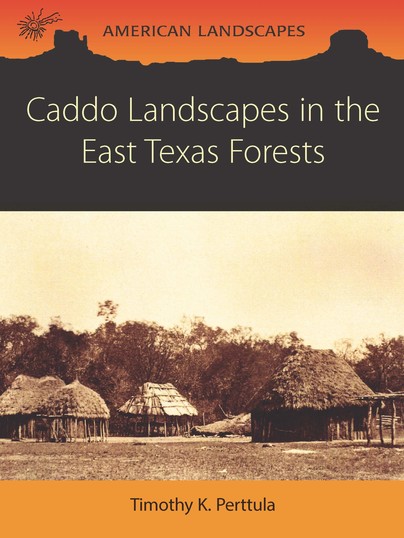
Format: Paperback
Pages: 264
ISBN: 9781785705762
Pub Date: 31 May 2017
Illustrations: b/w and colour
Description:
In this major, highly illustrated, new study Tim Perttula explores the cultural and social landscape of the Caddo Indian peoples (hayaanuh) for about 1000 years between ca. A.D.
850-1850. There were continual changes in the character and extent of ancestral landscapes, through times of plenty, risk, and hardship, as well as in relationships between different communities of Caddo peoples dispersed or concentrated across the landscape at different points in time. These ancestral peoples, in all their diversity of origins, material culture, subsistence, and rituals and religious beliefs, actively created their societies by establishing connected places on the land that became home and lead to the formation of social networks across environments with a diverse mosaic of resources. Established places lent order to the chaotic worlds of people and nature, and they embodied history and the cosmos here on earth. Caddo Landscapes explores the ancestral Caddo constructed landscape, providing detailed information on earthen mounds, specialized non-mound structures, domestic settlements and their key facilities as well as associated gardens and fields, and places where salt, clay, lithic raw materials, and other materials were obtained and the social ties that linked communities in numerous ways. The character and key sequences of ceramics are discussed and radiometric dating evidence provided.
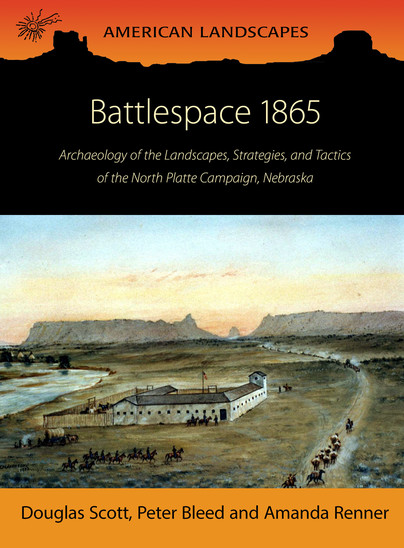
Format: Paperback
Pages: 144
ISBN: 9781785703393
Pub Date: 21 Dec 2016
Illustrations: b/w and colour
Description:
For a period of about week in February 1865, as the Civil War was winding down and Plains Indian communities were reeling in the wake of the Sand Creek massacre, combat swept across the Nebraska panhandle, especially along the Platte River. The fighting that marked this event barely compares to the massive campaigns and terrible carnage that marked the conflict that was taking place in the eastern states but it was a significant event at the opening on the ensuing Indian Wars. Operating on terrain they knew well, Cheyenne warriors and other Native forces encountered the US Cavalry who operated within a modern network of long distance migration and pony express trails and military stations.
The North Platte Campaign offers a good basis for the application of landscape approaches to conflict archaeology if only because of its scale. This fighting is both easily approached and fascinatingly encompassed. There were probably far fewer than 1000 fighters involved in those skirmishes, but before, after, and between them, they involved substantial movements of people and of equipment that was similar to the arms and gear in service to other Civil War era combatants. They also seem to have used approaches that were typical of America’s western warfare. Like many of the conflicts of interest to modern observers, the North Platte fights were between cultural different opponents. Archaeological consideration of battlefields such as Rush Creek and Mud Springs, bases, and landscapes associated with this fighting expose how the combat developed and how the opposing forces dealt with the challenges they encountered. This study draws on techniques of battlefield archaeology, focusing on the concept of ‘battlespace’ and the recovery, distribution and analysis of artifacts and weaponry, as well as historical accounts of the participants, LiDAR-informed terrain assessment, and theoretical consideration of the strategic thinking of the combatants. It applies a landscape approach to the archaeological study of war and reveals an overlooked phase of the American Civil War and the opening of the Indian Wars.

Format: Paperback
Pages: 288
ISBN: 9781782977544
Pub Date: 05 Feb 2015
Illustrations: b/w and colour illustrations
Description:
Nearly 2000 years ago, people living in the river valleys of southern Ohio built earthen monuments on a scale that is unmatched in the archaeological record for small-scale societies. The period from c. 200 BC to c.
AD 500 (Early to Middle Woodland) witnessed the construction of mounds, earthen walls, ditches, borrow pits and other earthen and stone features covering dozen of hectares at many sites and hundreds of hectares at some. The development of the vast Hopewell Culture geometric earthwork complexes such as those at Mound City, Chilicothe; Hopewell; and the Newark earthworks was accompanied by the establishment of wide-ranging cultural contacts reflected in the movement of exotic and strikingly beautiful artefacts such as elaborate tobacco pipes, obsidian and chert arrowheads, copper axes and regalia, animal figurines and delicately carved sheets of mica. These phenomena, coupled with complex burial rituals, indicate the emergence of a political economy based on a powerful ideology of individual power and prestige, and the creation of a vast cultural landscape within which the monument complexes were central to a ritual cycle encompassing a substantial geographical area.The labour needed to build these vast cultural landscapes exceeds population estimates for the region, and suggests that people from near (and possibly far) travelled to the Scioto and other river valleys to help with construction of these monumental earthen complexes. Here, in the first American Landscapes volume, Mark Lynott draws on more than a decade of research and extensive new datasets to re-examine the spectacular and massive scale Ohio Hopewell landscapes and to explore the society that created them.










